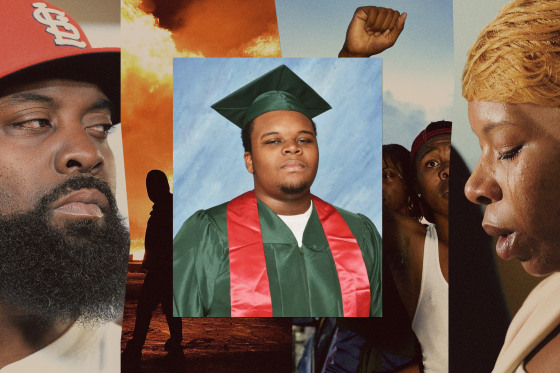FERGUSON, Mo. — Ten years ago, it seemed as though the world had erupted in this nondescript suburb of St. Louis. Michael Brown Jr., a Black teenager, had been gunned down by a white police officer, prompting weeks of protests and a flood of media attention on the rising prominence of police brutality upon Black people.
Back then, when officers finished their shifts patrolling the protests demanding justice, they would congregate at Marley’s, a known police bar about five minutes from where Brown was killed.
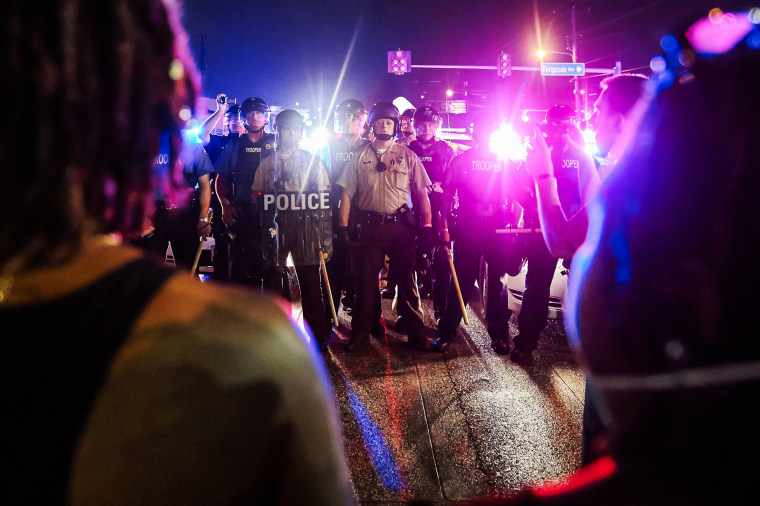
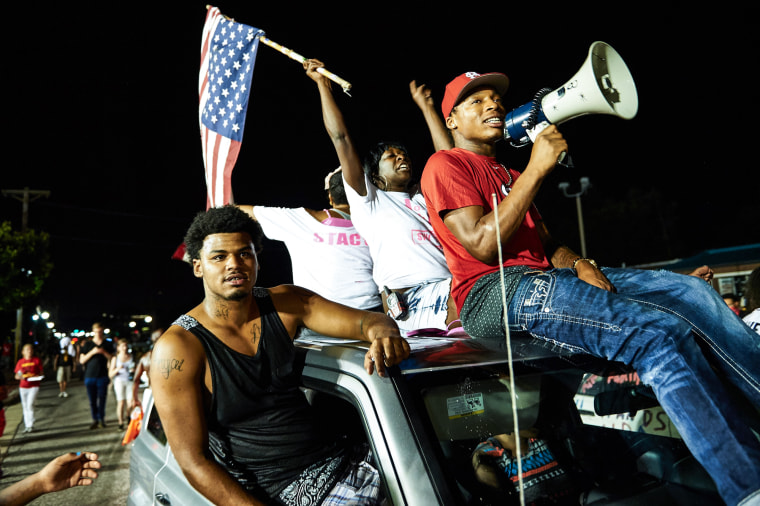
In 2022, Marley’s was sold and replaced by Elicious Southern Style Breakfast and Brunch, a Black-owned restaurant. And the significance of the new ownership is not lost on Adrienne Williams, one of the thousands of Ferguson residents who marched for Brown and helped shape a movement that spread across the country. She used to live two blocks away from Marley's.
“Believe it or not, but I feel safer with this spot here than I did with all those white officers hanging out here,” said Williams, 47, who now resides in St. Louis. “I was glad to see it go.”
But the switch from white police bar to Black-owned restaurant is one of the very few tangible changes in Ferguson in the last 10 years. By the time Brown lay dead in the street, Ferguson’s Black community had reached a breaking point. Those who spoke to NBC News said people had long been suffering in silence, dealing with a glaring lack of economic opportunities and a steady drumbeat of disproportionately harsh and racially biased policing tactics. The protests were the symptoms of a fever that had been breaking for too long — Ferguson demanded change.
“I recall the anger, the hurt and pain, the smell of smoke. Military trucks.” Williams said, shaking her head. “Never forget it.”
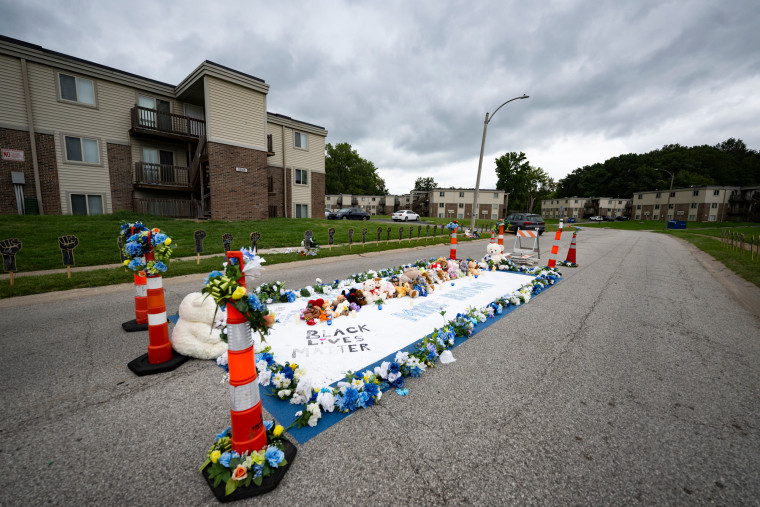
Friday marks a decade since Brown was shot multiple times by Officer Darren Wilson in the street on a hot Saturday afternoon, in front of several witnesses. Many of them said Brown was retreating and had his hands in the air. Wilson was relieved from duty but St. Louis County prosecutor Wesley Bell declined to charge him with a crime. So did the U.S. Department of Justice, which months later did issue a consent decree outlining the racist policing tactics used against Black residents in the city.
The shooting and its aftermath took a toll on a crestfallen family and a city mired in underdevelopment. With the national spotlight on Ferguson, residents renewed their calls for improvements, but none of those cries have wrought substantial change in the 10 years since, they say.
Few people understand this urgency, and frustration, more than Michael Brown Sr.
The death of his son forced Brown, 45, to change, to “grow up,” he said. Once a reserved man, he has blossomed into a nonprofit leader and community activist, all the while grieving so intensely that he only began laughing again last year, he said.
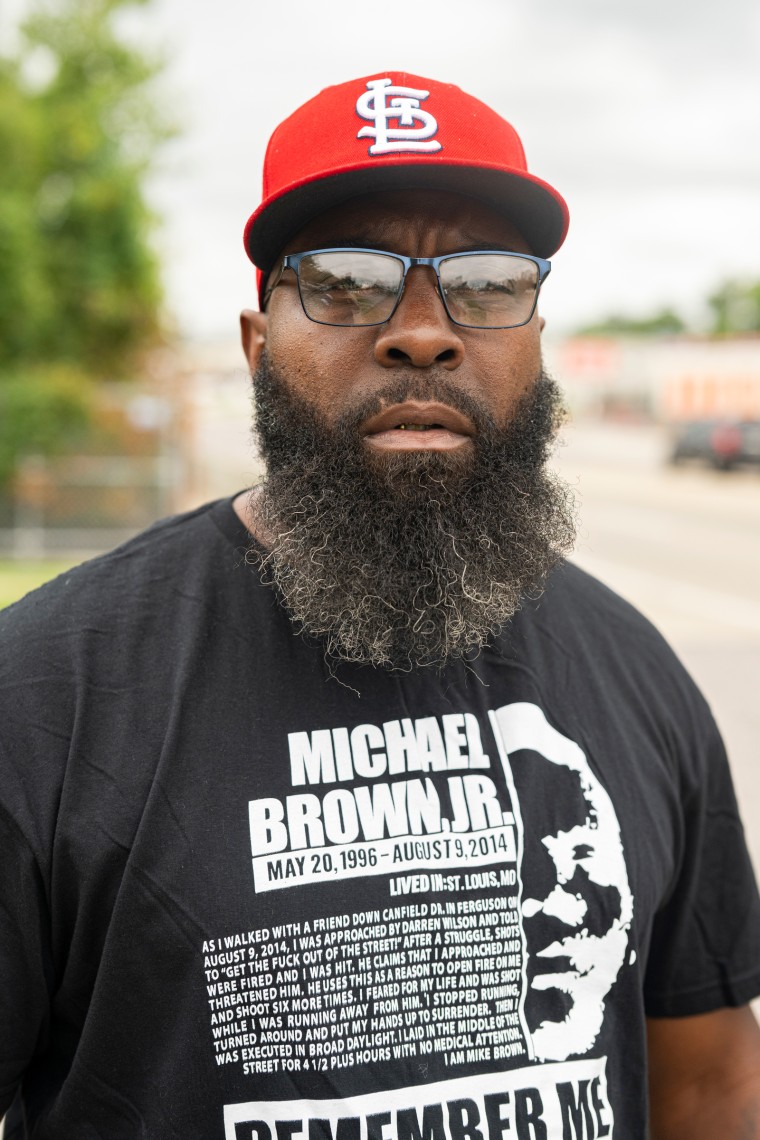
Almost everywhere in Ferguson are reminders of his 18-year-old child — on billboards, in businesses, on T-shirts. There is a feeling of communal connection to the family, an empathy that runs deep and an undying sense of grief because Brown was one of them. The ubiquitous image of Michael is also a reminder of the city’s unheard cries for investment and reform.
“There has been a lot of money that’s come here through the death of Mike Brown,” his father said. “There’s a lot of stuff that has been built and put in place — but not in the right places. There’s still a lot of work that needs to be done.”
Some parts of town have been upgraded with streetscaping; a National Urban League community center now stands where there was a QT convenience store that was burned down during the protests.
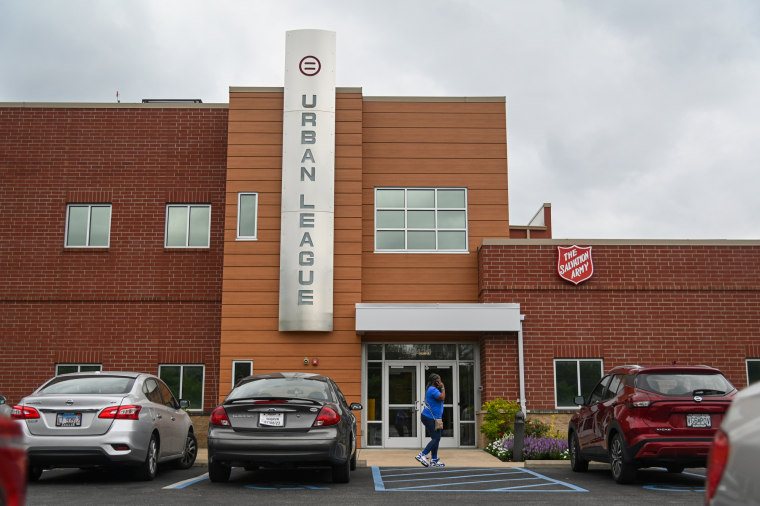
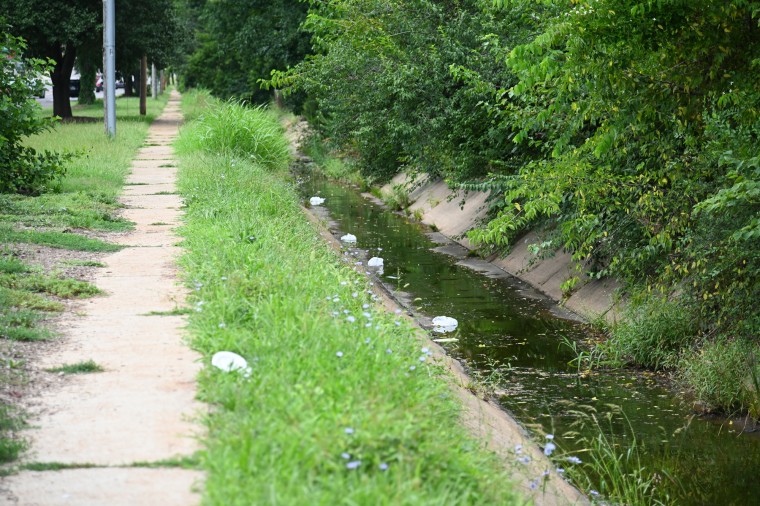
But most of those who spoke to NBC News said progress in Ferguson has been frustratingly slow. Decades of government records show Coldwater Creek, which runs nearby, has long been dangerously contaminated. Additionally, residents say more businesses have shuttered than opened along W. Florissant, the avenue at the heart of the unrest. The main thoroughfare looks almost identical to 2014, save for a Boys & Girls Club and a health clinic. New affordable housing has been minimal.
The median family income here was $42,000 in 2014, about $9,000 less than the national average; it was $47,410 in 2022, far below the $74,580 national average, according to the most recent census.
Justin Idleburg, a childhood friend of the elder Brown and member of Forward Through Ferguson, a group created to help local organizations, businesses and communities promote racial equity, said any influx of resources has had little impact on residents’ lives.
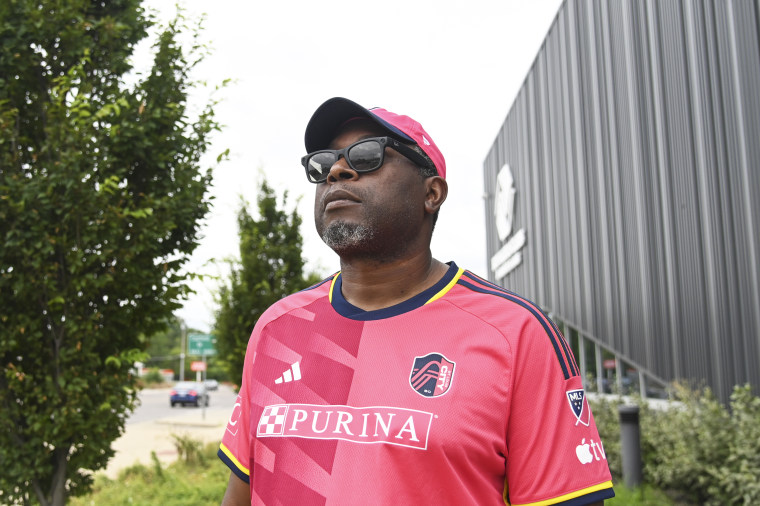
“It’s clear that some people benefitted from all the attention Ferguson received in 2014,” Idleburg said. Locally, “there have been more opportunities for executive positions and corporate positions for Black people. A lot of people knew about racial equity, but a lot of people in Ferguson did not. So a critical gap remains: the lack of allocated funds to help community members implement solutions they co-create.”
Systemic barriers remain, Idleburg said; minimal access to innovation, investment and opportunities for people to improve their own lives and their community’s continues to characterize Ferguson to this day.
Idleburg is the founder of Cabanne District CDC, a group designed to assist local residents in the areas of housing and social and economical solutions. “We need to work on the quality of life in our community,” he said. “We need investment projects, not charity projects. When you get charity projects in our neighborhood, it’s a donation and they move on. That helps. But … when you invest, you stick around to make sure your investment grows.”
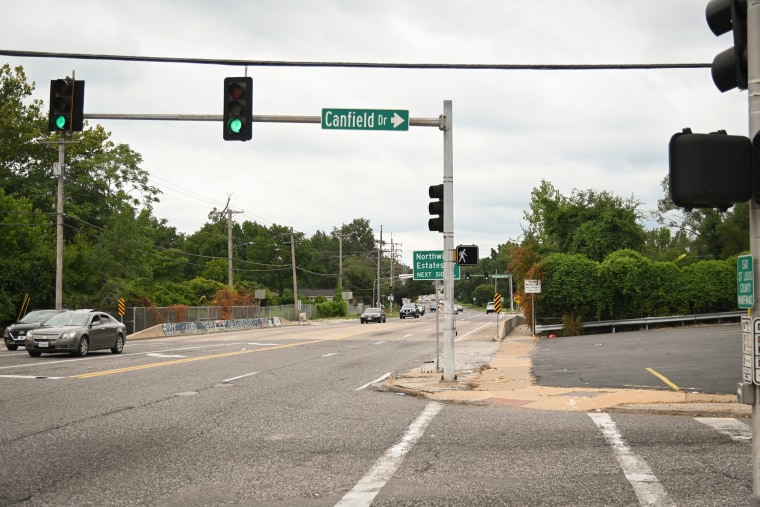
Outgoing Rep. Cori Bush, D-Mo., was invested in building up Ferguson. Many took it hard when she lost the Democratic primary on Tuesday to Wesley Bell, the prosecutor who did not press charges against Wilson in Brown's death. It was “a blow to all of us,” said Trina Owens Rogers, a Ferguson resident. “It’s like one step forward, two steps back.”
As for policing, the once virtually all-white police department — 50 of 53 officers were white in a town that was 67% Black in 2014 — has gone through two chiefs since Brown’s death. The department is now predominantly Black, according to Mayor Ella Jones, and only four officers from 2014 remain on the Ferguson force.
“The faces have changed,” Brown Sr. said. “Stop and frisk has stopped. They are using bodycams. I can say residents are not being harassed like they were up to 10 years ago.”
After an initial grieving period, Brown’s wife, Cal, told him to speak up “because people think Mike didn’t have a father.” So Brown did. “I had to open my mouth, put my big drawers on and let the world know he does have a father.”
He eventually formed Chosen for Change, a nonprofit that centers on helping fathers who lose a child in a similar fashion cope with the devastation through group meetings, outings and other activities that promote bonding.
“I’m telling these brothers, ‘It’s OK to cry. You’ve got to get out. You’re not soft because you let it out,’” he said. “My program actually helps build fathers back up because this is definitely a life sentence that we live in. Instead of sending these brothers back out on the street as a ticking time bomb, we help and mold them to a new person, because they definitely are not the same person they were before they lost a loved one.”
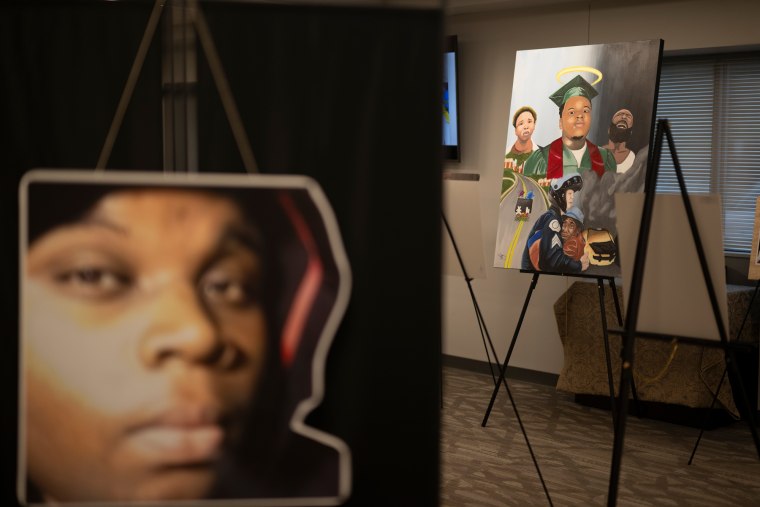
Brown’s family and community leaders remain committed to commemorating his life every year with a week of events, including an exhibit featuring art and artifacts of his life, a screening of the documentary “Ferguson Rises,” a panel discussion with fathers who lost their sons at the hands of police, and other gatherings.
Doing this work “helps me,” Brown said. “I do a lot of my healing through my work. This is how I sustain and not flip out or lose my mind. So we’re helping each other.”
He laughed. “I’ve been frowning for nine years,” Brown said.
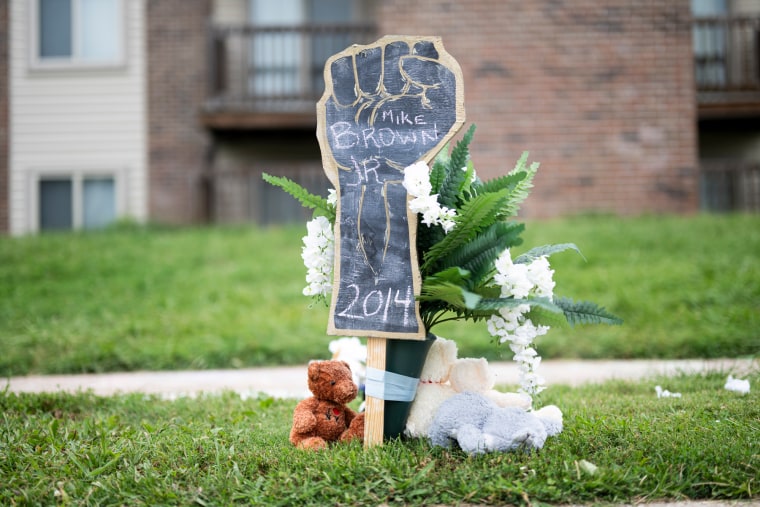
In the last several years, efforts have been made to unify Black and white Ferguson. Every month, residents of both races gather for communal events, something that did not happen prior to the shooting. At a service on Wednesday at St. Stephen's Episcopal Church, white and Black residents worshiped in unison in the name of Michael Brown Jr.
“This tragedy has brought us together,” said Trina Owens Rogers. “And that’s something because, 10 years ago, his death was something that arrived at all of our doorstep. Michael Brown opened my eyes to what was going on in our city. Protesting was an eye-opener, but necessary. Here we are now, still looking for change, though. At this point, I just say, ‘Lord, help us.’”
For more from NBC BLK, sign up for our weekly newsletter.
